#Nasikabatrachus
Explore tagged Tumblr posts
Text

Purple Frog (Nasikabatrachus sahyadrensis), family Nasikabatrachidae, endemic to the Western Ghats of India
Adult frog described in 2003, though the juvenile frog was described in 1917. (Though, of course, the adult frog was known by local people).
This frog spends most of its life underground, and emerges to mate during monsoon rains.
Unlike many burrowing frogs, which emerge to feed above ground, this species feeds on termites underground (as well as feeding above).
photograph by P. S. Sivaprasad
1K notes
·
View notes
Note
I have a question. Out of all the amphibians you can think of, which have the most protuberant, goofy-looking, bug eyes? Like, I know most frogs and toads have pretty bulging eyes but there's gotta one or two species that take that up to eleven? Love your blog, it's a really nice mix of informative and fluffiness.
Oof, this is a tough one. Really had to give it some thought.
Purple frogs, Nasikabatrachus, have eyes that look like they have been glued onto a ball of clay:

Photo: Sandeep Das
But I feel like that's not what you're going for.
I think perhaps the most strikingly bulbous eyes belong to frogs of the genus Leptobrachium

[src] L. hendricksoni
These frogs have such huge heads—and then in those heads such huge eyes—that they really look like they were drawn by a cartoonist.
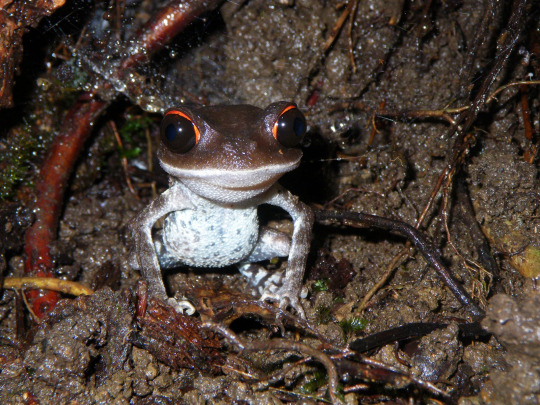
[src] L. lunatum
#frog#frogs#animals#zoology#herpetology#I feel like there are some out there that I am definitely not recalling right now#so please add to the list if you can#but Leptobrachium are pretty extreme#taking it to 11?#well maybe 10.5#Nasikabatrachus#Nasikabatrachus sahyadrensis#Leptobrachium#Leptobrachium lunatum#Leptobrachium hendricksoni#Answers by Mark
915 notes
·
View notes
Text
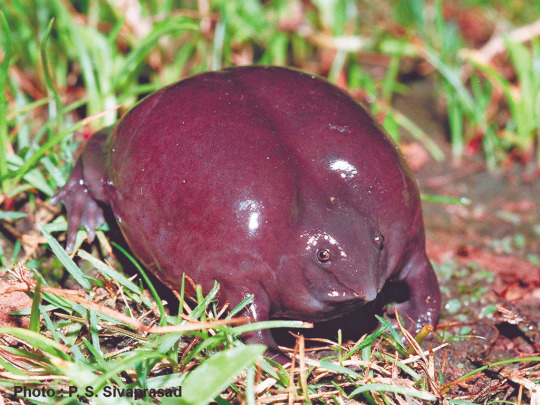
today's elegant frog of the day is the purple frog (Nasikabatrachus sahyadrensis)!!!!!!!!!!!!!!!!!!!!!! they're endemic to the western ghats mountain range and spend most of their lives underground! they are also, notably, rather purple.
photo by sivabirds!
1K notes
·
View notes
Text

What in the world? The purple frog (Nasikabatrachus sahyadrensis), also known as the pig-nosed frog, might be spotted along India’s Western Ghats mountains. This unusual looking amphibian spends most of its time burrowed underground, typically near a stream or a pond. It uses its sensitive snout to sniff out snacks, like termites, and then scoops them out with its fluted tongue!
Photo: P. S. Sivaprasad, CC BY-NC 4.0, iNaturalist
#science#nature#natural history#animals#fact of the day#did you know#herpetology#frogs#animal facts#western ghats#purple frog#pig-nosed frog
730 notes
·
View notes
Text
PURPLE FROG MENTIONED (CONFETTI)
i feel like the cutesy cottagecore aesthetique undersells how incredibly crazy and freaky and ugly frogs can really be. they're out here climbing on top of each other and swallowing live animals and secreting psychoactive venom through their warty skin while looking like expired leftovers. why does animal activism/appreciation only stop at the cute things? WHERE is the love for the real unfiltered unsanitized animal just being a nasty little animal.

#indian purple frog#nasikabatrachus sahayadrensis#frogs are Creatures#there is such thing as a Venomous frog#they have Spikes on their skull#the greenings frog and bruno's casque headed frog
3K notes
·
View notes
Text
WAKE THE FUCK UP TUMBLR IT'S WORLD FROG DAY
LOOK AT THIS GUY:
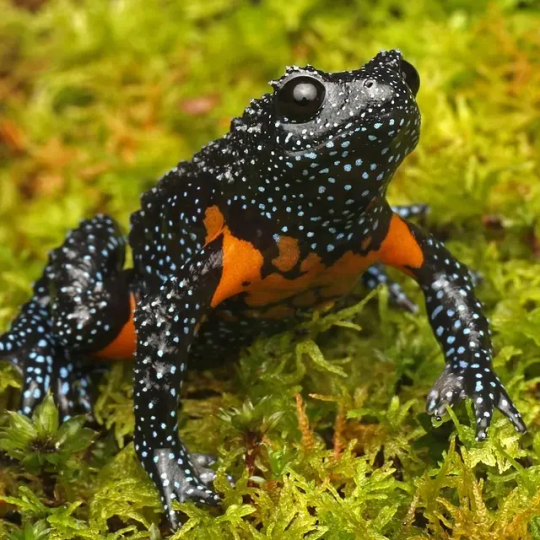
Galaxy Frog (Melanobatrachus indicus): Vulnerable. Image credit: David V Raju CC BY-SA 4.0
AND THIS GUY:
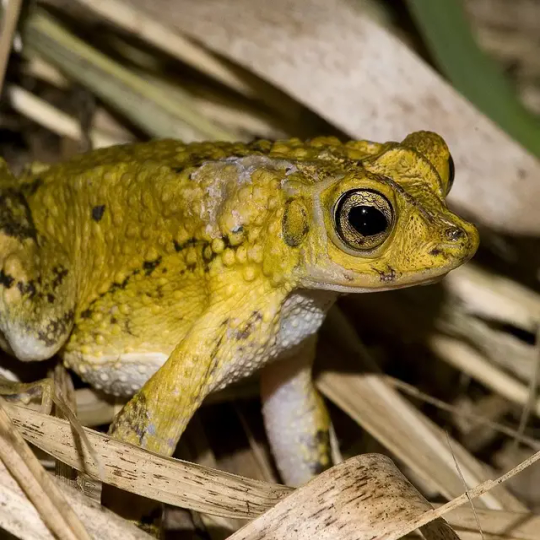
Puerto Rican Crested Toad (Peltophryne lemur). Endangered. Image credit: US FWS
AND THIS GUY:
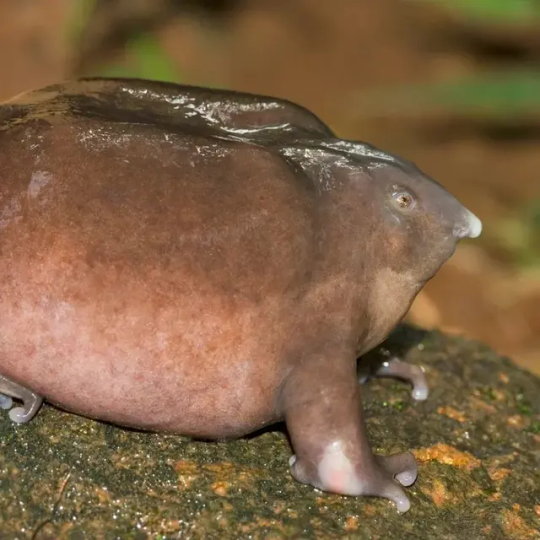
Indian Purple Frog (Nasikabatrachus sahyadrensis): Near Threatened. Image credit: Sandeep Das
We share our planet with over 7500 species of frogs and toads, but yet over a third of them are threatened with extinction due to human activity!
WE MUST PROTECT THESE FUNKY LIL GUYS
Check out the links below to learn about two endangered frog species and what YOU can do to help protect them from extinction!
Now, I shall commence the FROG BOMBING.
#animals#science#nature#biology#wildlife#conservation#environment#frogs#frogbombing tumblr for world frog day
280 notes
·
View notes
Note
YOU DON'T KNOW WHAT TO DRAW YOU SAY??? I REALLY THINK YOU SHOULD CONSIDER DRAWING A NASIKABATRACHUS SAHYADRENSIS, ALSO KNOWN AS A PURPLE FROG OR PIGNOSE FROG!!! :D
I've been on a mission for so long to show as many people this creature as possible. Please just at least look the lil' guy up, just knowledge it's existence

What the fuck. This dude is worse than the turtle frog. Frogs have some freaky genetics fr
46 notes
·
View notes
Note
I'M LEGALLY REQUIRED TO SUGGEST THAT YOU DRAW A NASIKABATRACHUS SAHYADRENSIS ALSO KNOWN AS A PURPLE FROG, I HAVE TO DO THIS EVERY TIME SOMEONE SAYS THEY DONT KNOW WHAT TO DRAW

he looks like if a mole made a wish to be a frog
(i'm taking requests rn!)
11 notes
·
View notes
Note
I THINK YOU SHOULD BE AWARE OF THE EXISTENCE OF THE NASIKABATRACHUS SAHYADRENSIS, ALSO KNOWN AS A PURPLE FROG OR PIGNOSE FROG!
That's all, bye

why would you curse me with this knowledge /j
6 notes
·
View notes
Text

Purple Frogs (Nasikabatrachus sahyadrensis), mating & laying eggs, family Nasikabatrachidae, Western Ghats, India
Photograph by Sandeep Das
789 notes
·
View notes
Text
Ornithologist here (extremely late to the game) to back up the community with a Purple Frog (Nasikabatrachus sahyadrensis)! Bird people like frogs too!
The frogblr community has mysteriously disappeared with no notice or explanation. Reblog and add a frog to show @staff we need our community back!
I’ll go first.

#purple frog#Nasikabatrachus sahyadrensis#Indian frogs#frogs of India#Nasikabatrachidae#frogblr#frarmy#frogs of tumblr#science#organismal biology#frogs#herpetology
3K notes
·
View notes
Text

frog bi pride flag!
featuring: Atelopus hoogmoedi Nasikabatrachus sahyadrensis Dendrobates tinctorius
#frogs#amphibian#amphibians#lgbt#pride#queer pride#lgbt pride#pride month#pride 2024#lgbtqia#happy pride 🌈#bisexual#pride flags#pride flag
21 notes
·
View notes
Text

The Indian purple frog (Nasikabatrachus sahyadrensis), also known as the purple frog or the pig nose frog, is an endangered frog endemic to the Western Ghats of India.
Formally recognized in 2003, their only known relatives are the Seychelles Island Frogs.
Each specimen is around 1–3 in./6-9cm from snout to rear; males being a third of the size of the females. While its flattened body shape and squat limbs look unusual, it helps the frog stick to rocks and hold on through the strong currents of its native streams and rivers; the wedge-like head assists in burrowing.
Unlike most subterranean frogs, the Indian purple frog spends nearly all its time underground, which includes feeding. Their main food source is termites.
They only emerge during two weeks of monsoon season for breeding. Males emerge and call on the banks— the sound reminiscent of a chicken clucking. Males mount the females, who carry them to the rocky crevices where they lay their eggs. Over 3000 eggs are laid at the same time, and the tadpoles grow over 100 days.
Their main threats are the pet trade, consumption by locals (as they are believed to help with numerous lung ailments), and habitat loss.
#frogs#frog#biology#herpetology#zoology#Indian purple frog#Indian animals#wildlife#sciblr#bioblr#herpetofauna#amphibians#amphibia#frogblr
8 notes
·
View notes
Note
LISTEN, I know you probably wanna draw something related to a fandom you're in, but please do consider the humble Nasikabatrachus sahyadrensis, also known as the purple frog or pignose frog, seriously, they're just so amazing. Of course you don't HAVE TO draw a purple frog, but CONSIDER IT!
ive considered it and yes

amazing
4 notes
·
View notes
Text
10 Lesser-Known Animals and Their Unique Eating Habits 🦜🌿
Aye-Aye (Daubentonia madagascariensis)
Habitat: Madagascar 🌴
Diet: Insects, particularly wood-boring grubs 🪲
Feeding Habits: The aye-aye uses its long, thin middle finger to tap on trees to locate hollow chambers where grubs reside. Once a grub is located, it gnaws a hole in the wood with its forward-slanting incisors and uses its elongated finger to extract the grub. 🦷👆

Blobfish (Psychrolutes marcidus)
Habitat: Deep sea, off the coasts of Australia and New Zealand 🌊
Diet: Crustaceans, sea urchins, and other deep-sea creatures 🦀
Feeding Habits: The blobfish lacks muscles, so it doesn't actively hunt. Instead, it floats along the sea floor, opening its mouth to suck in any edible matter that drifts by. 🍽️

Pangolin (Pholidota)
Habitat: Various habitats across Asia and Africa 🌍
Diet: Ants and termites 🐜
Feeding Habits: Pangolins have long, sticky tongues that they use to probe ant and termite nests. They have strong claws to break into the nests and a sticky tongue to lap up the insects. 👅

Gharial (Gavialis gangeticus)
Habitat: Rivers in the Indian subcontinent 🌊
Diet: Fish 🐟
Feeding Habits: The gharial has a long, narrow snout filled with sharp teeth, perfect for catching fish. It uses a swift side-to-side snapping motion to catch fish swimming by. 🐊

Star-Nosed Mole (Condylura cristata)
Habitat: Wet lowland areas in North America 🦔
Diet: Small invertebrates, aquatic insects, worms 🪱
Feeding Habits: This mole uses its star-shaped nose, covered in sensory receptors, to detect prey. It can identify and consume small prey in a fraction of a second. 🌟

Hoatzin (Opisthocomus hoazin)
Habitat: Swamps, river forests of the Amazon Basin 🌳
Diet: Leaves and vegetation 🍃
Feeding Habits: The hoatzin has a specialized digestive system that ferments vegetation similar to a cow’s stomach. It spends hours digesting leaves in its crop, a part of its digestive tract. 🐦

Numbat (Myrmecobius fasciatus)
Habitat: Eucalyptus forests in Australia 🌏
Diet: Termites 🐜
Feeding Habits: Numbats use their long, sticky tongues to probe into narrow crevices and galleries within termite mounds. They can eat up to 20,000 termites a day. 👅

Leafcutter Ant (Atta spp.)
Habitat: Tropical rainforests in Central and South America 🌲
Diet: Fungi that they cultivate 🧫
Feeding Habits: Leafcutter ants cut leaves and carry them back to their nests, where they use the leaves to grow a special fungus, which serves as their primary food source. 🍄

Purple Frog (Nasikabatrachus sahyadrensis)
Habitat: Western Ghats of India 🌄
Diet: Termites 🐜
Feeding Habits: Spending most of its life underground, the purple frog comes out only during the monsoon season to breed. It uses its specialized tongue to feed on termites in underground colonies. 🐸
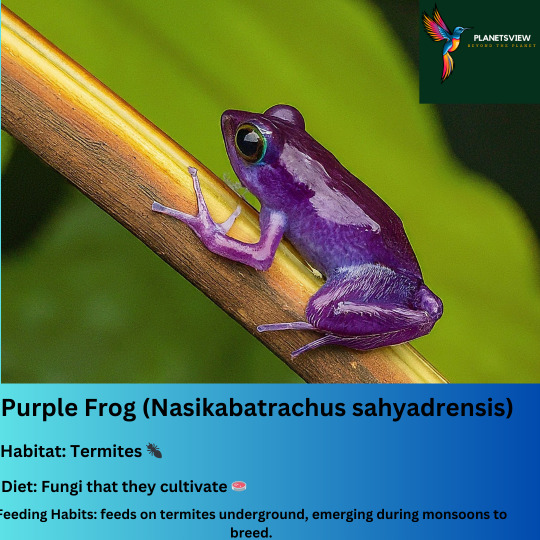
Vampire Finch (Geospiza difficilis septentrionalis)
Habitat: Galápagos Islands 🌴
Diet: Blood of other birds, insects 🌿
Feeding Habits: The vampire finch pecks at the skin of larger birds like boobies to drink their blood. This behavior likely evolved due to scarce food resources. 🦜

These lesser-known animals each have unique and fascinating feeding habits that highlight the incredible diversity of the natural world. 🌍✨
#animals#plants#forest#animal#wildlife#planet#nature#nature photography#naturelovers#natureconservation#animal protection#animal print#animal products
6 notes
·
View notes
Text
Hello frog enjoyers this is day 7 of frog posting I'm happy to say I've gotten a week worth of frog posts anyway today's frog is....
The purple frog! (Nasikabatrachus sahyadrensis)
These frogs are about 7cms in length
And weigh 165 grams on average
These frogs are rare and an incredibly ancient species having independently evolving over 120 million years ago they have a distinct "mole" like nose!

5 notes
·
View notes